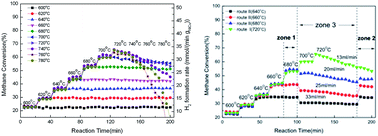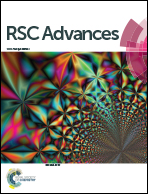Hydrogen production by methane decomposition over Ni–Cu–SiO2 catalysts: effect of temperature on catalyst deactivation
Abstract
Catalytic decomposition of methane (CDM) is a simple process for the production of high-purity, COX-free (CO or CO2) hydrogen. The CDM is a moderately endothermic reaction, and high temperatures are thermodynamically favorable for achieving high methane conversion. However, Ni–Cu catalysts easily lose their activities at high temperature. To study the effect of temperature on the deactivation of Ni–Cu catalysts, a 65% Ni–15% Cu–SiO2 catalyst was prepared by the heterophase sol–gel method. A series of kinetic experiments (routes I, II, III) were designed to test the catalytic performance and generate by-product carbon structures. The effects of reaction temperature and methane dissociation rate on catalyst deactivation were studied. The phase transition temperature was estimated. Based on the kinetic experiments, TEM images, XRD data, TGA-DSC curves, and TEM-EDX data, a thoroughly deactivation study of the 65% Ni–15% Cu–SiO2 catalyst was carried out. The results of this study proved that high degree of graphitization was the key factor contributing to the deactivation of Ni–Cu catalysts. Fragmentation and phase separation at high temperature were both responsible for carbon atom enrichment and a high degree of graphitization, which in turn caused the 65% Ni–10% Cu–25% SiO2 catalyst to lose activity at high temperature.


 Please wait while we load your content...
Please wait while we load your content...